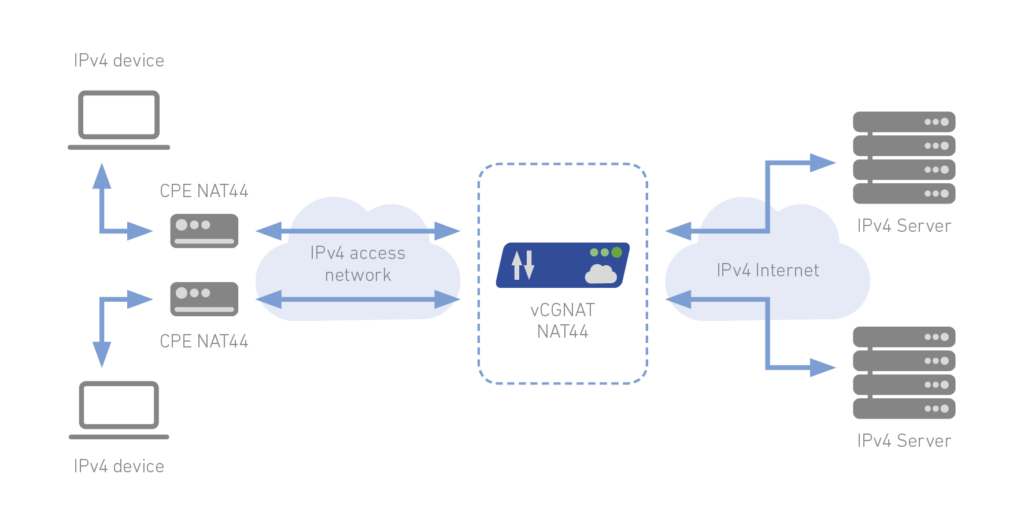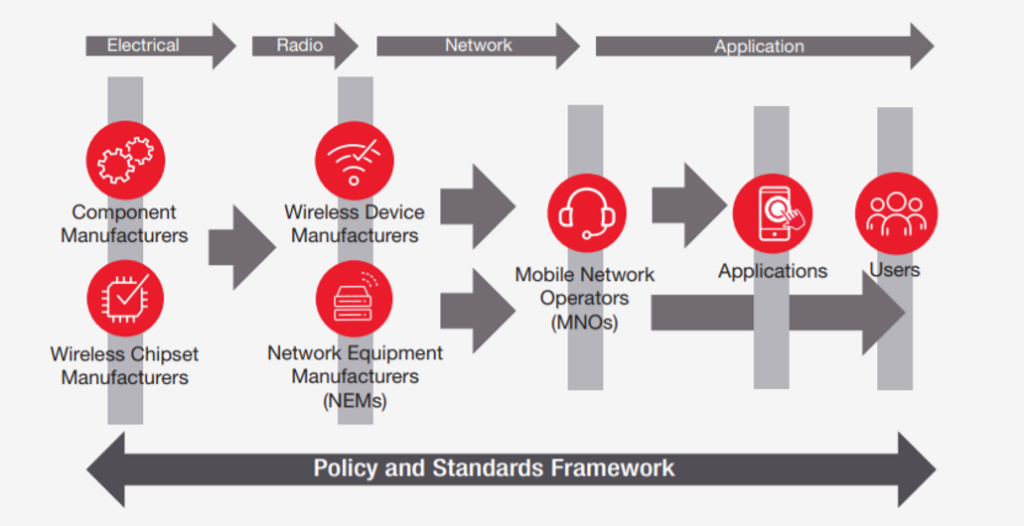Carrier grade refers to the stringent requirements for reliability, availability, serviceability, and scalability that telecommunications carriers demand from their network equipment vendors.
Carrier networks form the backbone of all voice and data communications, so their infrastructure must be robust enough to provide five-nines (99.999%) uptime despite hardware failures, software bugs, cyber-attacks, and other disruptions.
Telecom companies choose carrier-grade gear to ensure excellent quality of service for their business and consumer customers.
This equipment undergoes rigorous testing to verify it meets telecom industry standards and the organization’s requirements.
Carriers pay premium prices for these heavy-duty systems but consider it well worth the investment to keep their networks humming smoothly around the clock.
In this article, we will gain deep knowledge about what is a carrier-grade, its testing and certification, requirements, and benefits.

Features of Carrier Grade
1. Reliability
Carrier-grade systems offer incredible reliability, designed to deliver five 9s (99.999%) uptime.
This means the gear can suffer no more than 5 minutes and 15 seconds of downtime per year. Redundant components provide fault tolerance if an element fails.
2. Availability
Availability measures the percentage of time a system is operational and accessible to users.
High availability exceeds 99.999% uptime. Carrier-grade equipment maintains constant availability through redundancy, failover mechanisms, and resilient software architectures.

3. Serviceability
Serviceability refers to how quickly a failed component can be repaired or replaced. Carrier-grade systems are designed for serviceability.
Modular components can be swapped out while the system runs. Carriers maintain spares to expedite change-outs. Vendors offer same-day support.
4. Scalability
Scalability allows systems to handle increasing workloads. Carrier-grade infrastructure effortlessly scales to accommodate new users and higher traffic volumes.
System designs support easy capacity expansion via additional cards, processors, memory, etc.
Testing and Certification
Carrier-grade products undergo rigorous validation testing to verify they meet demanding telecom standards.
Vendors self-test gear in development. Third-party labs run exhaustive stress tests. Carriers conduct acceptance testing before deployment. Certification by standards bodies follows.
1. Vendor Testing
Vendors thoroughly test carrier-grade systems during design, development, and manufacturing. Reliability testing uncovers hardware weaknesses.
Traffic simulation evaluates performance limits. Software is debugged through white box and black box testing. Beta deployments validate quality.
2. Third-Party Testing
Independent testing labs assess carrier-grade gear per test plans defined by telecom standards bodies.
Environmental stress screening includes vibration, temperature cycling, humidity, etc.
High-volume traffic scenarios measure throughput, latency, scalability, and resistance to failure.
3. Carrier Acceptance Testing
Upon delivery, carriers test systems in their labs to confirm vendor claims.
Long-term reliability tests run for months. Monitoring tools track performance metrics. Successful completion permits live deployment.

4. Certification
Major telecom standards organizations have carrier-grade certification programs.
Certification provides an official stamp of approval that gear passed extensive conformance and interoperability testing.
Telecom-Grade Standards
Carrier-grade equipment must fully comply with standards from telecom industry organizations such as 3GPP, ETSI, ATIS, TIA, IEEE, and more.
1. 3GPP
The 3rd Generation Partnership Project standardizes wireless technologies like LTE and 5G. All vendor equipment must interoperate regardless of manufacturer.
2. ETSI
The European Telecommunications Standards Institute develops standards for information and communications technologies, including fixed, mobile, radio, and internet technologies.

3. ATIS
The Alliance for Telecommunications Industry Solutions is a U.S. group that develops standards for wireless and wireline networks.
4. IEEE
The Institute of Electrical and Electronics Engineers has carrier-grade standards for optical transport networks, ethernet, network synchronization, and more.

5. ITU
The International Telecommunication Union adopts global standards to ensure the seamless interworking of telecom networks and technologies.
Carrier Grade Requirements
Carrier grade systems must satisfy demanding carrier requirements for:
1. Hardware Redundancy
Hardware redundancy ensures no single component failure takes the system offline.
Redundant power supplies, processors, line cards, fans, and other elements provide fault tolerance.

2. Software Resiliency
Resilient software architectures prevent failures from cascading into outages.
Process isolation and memory protection safeguard core functions. Automated failover quickly engages backup resources.
3. Interoperability
Interoperability enables multivendor networks. Open standards allow carriers to avoid vendor lock-in. Components seamlessly work together through common protocols and APIs.
4. Security Hardening
Hardened systems resist cyber-attacks.
Communications are encrypted end-to-end. Penetration testing probes for weaknesses. Access controls and activity logging help detect threats.

5. Remote Management
Centralized management platforms monitor performance and troubleshoot faults remotely. Automation minimizes manual tasks. Assets are provisioned and updated over the network.
Carrier Grade Benefits
1. High Availability
Carrier-grade systems are designed for maximum uptime and availability.
They utilize redundant components and failover mechanisms to ensure continuous operation even in the event of hardware failures. The goal is to achieve 99.999% (five 9’s) availability or higher.
2. Service Level Agreements
Carriers commit to stringent service level agreements (SLAs) that guarantee performance metrics like latency, throughput, and uptime.
Financial penalties are often involved if SLAs are not met. This ensures customers receive an agreed-upon quality of service.
3. Scalability
Carrier networks are built to handle huge volumes of traffic and users. They are rapidly scalable to accommodate unexpected surges in demand.
Extra capacity can quickly be added through additional hardware and bandwidth.

4. Resiliency
Carrier-grade systems are engineered for resilience. They have no single point of failure and can rapidly recover from outages.
Redundant infrastructure and automated failover capabilities provide continuity of operations.
5. Security Robust
security protections are implemented to safeguard networks from cyber threats.
This includes firewalls, intrusion detection/prevention systems, encryption, access controls, and more. Security is a top priority.
6. High Performance
Specialized high-performance hardware is utilized to ensure fast, reliable connectivity on carrier networks.
Optimization for speed, low latency, and consistency across large distributed infrastructures.
7. Manageability
Carrier-grade systems provide comprehensive monitoring, analytics, and network management capabilities.
This enables operators to oversee performance, quickly detect issues, and rapidly respond.
8. Standards Compliance
Carriers adhere to rigorous industry standards for interoperability, reliability, and safety.
This includes standards bodies like the ITU, 3GPP, ETSI, and more. Compliance ensures quality and compatibility.
Frequently Asked Questions (FAQ)
Ques 1. What is carrier-grade?
Ans. Carrier-grade refers to telecom equipment that meets stringent reliability, availability, serviceability, and scalability requirements to keep carrier networks operating smoothly 24/7/365.
Ques 2. Why is carrier grade important?
Ans. Carrier networks are mission-critical infrastructure relied upon by individuals, businesses, governments, and military/emergency services.
Carrier-grade gear ensures these stakeholders consistently get the high level of network performance they demand.
Ques 3. What makes equipment carrier-grade?
Ans. Equipment is carrier-grade if it offers redundancy, fault tolerance, resilient software, rigorous testing/certification, and aligns with telecom industry standards for interoperability, security, and reliability.
Ques 4. Who defines carrier-grade standards?
Ans. Organizations like 3GPP, ETSI, ATIS, TIA, and IEEE develop technology standards required for carrier-grade equipment. Vendors must comply to ensure multivendor interoperability.
Ques 5. How does carrier grade differ from enterprise-grade?
Ans. Carrier-grade implies five 9s reliability and stringent standards compliance. Enterprise-grade focuses more on features and flexibility with less emphasis on availability and independent testing/certification.






